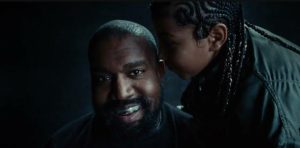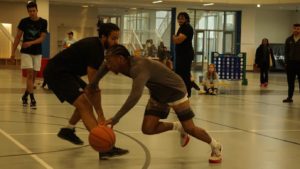Non-Visible Disabilities Awareness
March 1, 2020
What is the first thing that comes to mind when you hear the word “disability?” Is it a woman in a wheelchair? Perhaps a man with a white cane or maybe a little kid who is wearing a hearing aid.
Whichever first comes to mind is correct, because all of those descriptions accurately portray someone who has a visible disability. However, the first idea that came to your mind probably wasn’t of someone with a mental or physical disability that isn’t noticeable without the assistance of a guiding object. This is the problem that most people with non-visible disabilities face. When trying to obtain the accommodations they need, they often times get treated differently.
One of the people who has experienced this firsthand is me.
I have two non-visible disabilities. One is a mental disorder and the other is a physical condition. I have PDD-NOS (Pervasive Developmental Disorder-Not Otherwise Specified), which is part of the autism spectrum, and Ehlers-Danlos syndrome type 3, which means I have loose joints that can cause severe joint pain.
Thankfully, I have received the help that I needed over the years, but I still had to deal with very uncomfortable situations and people who were not understanding of my conditions.
When I was in sixth grade, I was bullied by other students because I was socially awkward because I was on the autism spectrum. Rumors were spread around about me and I suffered from severe anxiety. I was afraid to go to school.
I would throw up almost every morning before getting on the bus because of my anxiety and it got to the point where I had to meet with my principal. I told her about my situation and, at first, she was extremely non-empathetic towards me — she told me that I should grow thicker skin and suggested that I be put on medication.
The principal did not take my situation seriously and made me feel like I was the one with the problem because I was different and too sensitive. I was forced to go back to class after that meeting despite tears coming out of my eyes. I was scared.
When I told my mother what happened, appropriate measures were taken and my parents and other staff members advocated for me to get the help I needed. Finally, the principal put an end to the bullying.
I cannot stress enough how hard it was for me to get through those rough days. But I was able to because I advocated for myself.
I remember another incident that occurred during my freshman year of high school. It’s really hard for me to walk up a lot of stairs because of my Ehlers-Danlos syndrome, so I usually take the elevator.
One time I tried to use the elevator, but I was blocked by a security guard. When I politely asked him to use it, he pointed to another student who had crutches and a cast around his leg. He told me that that student had a reason to go on the elevator, and asked me: “What is wrong with you?”
Little did he know, I also had a reason to use the elevator, but I felt guilt-tripped and forced myself to use the stairs. I knew I was making a poor decision, especially because I remembered the time when I actually dislocated a joint in my hip while going down the stairs.
After that incident, I spoke up about my situation and the school gave me an elevator pass to show the security guards. Once again, my problem did not get solved until I communicated with others about my struggles.
According to the dictionary, the word disability is defined by a “physical or mental condition that limits a person’s movements, senses or activities.” This means that a disability is not always visible and a person’s struggles are not always obvious. This is why it is so important to spread awareness about all disabilities, not just the ones that are easier to talk about.
Every person with a disability deserves to receive the help they need and should not be discriminated against.





